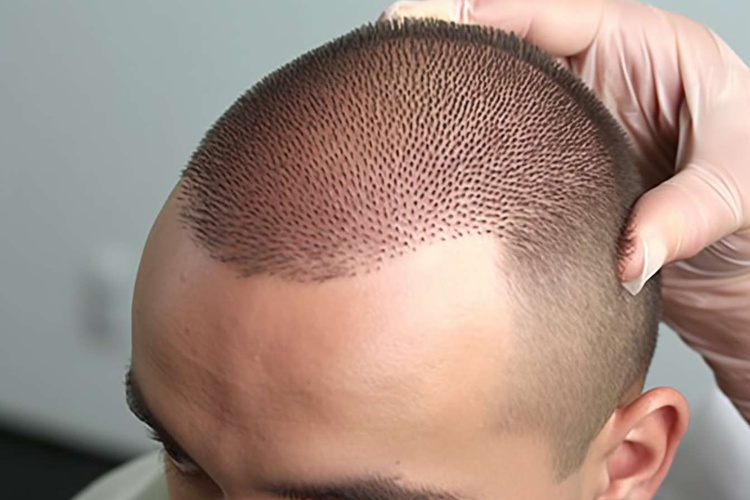Understanding Hair Transplant Costs 2025
Hair transplantation has become an increasingly popular solution for those experiencing hair loss. As medical technology advances, so do the options and costs associated with this procedure. This article delves into the various factors that influence hair transplant costs, typical price ranges, and important considerations for potential patients looking ahead to 2025.

What are the typical price ranges for hair transplants?
Hair transplant costs can vary widely depending on several factors. In general, patients can expect to pay anywhere from $4,000 to $15,000 for a hair transplant procedure. However, it’s important to note that these figures are estimates and can fluctuate based on the specific technique used, the extent of the transplant, and the geographic location of the clinic.
For instance, Follicular Unit Extraction (FUE) techniques tend to be more expensive than traditional Follicular Unit Transplantation (FUT) methods. Similarly, procedures requiring a larger number of grafts will naturally cost more than those addressing smaller areas of hair loss.
What factors affect hair transplant costs?
Several key factors contribute to the overall cost of a hair transplant procedure:
-
Technique used: As mentioned, FUE typically costs more than FUT due to its more intricate and time-consuming nature.
-
Number of grafts required: The extent of hair loss and the desired coverage area directly impact the number of grafts needed, influencing the total cost.
-
Surgeon’s expertise: Highly skilled and experienced surgeons often command higher fees for their services.
-
Geographic location: Clinics in major metropolitan areas or countries known for medical tourism may have different pricing structures compared to smaller cities or rural areas.
-
Facility quality: State-of-the-art clinics with advanced technology may charge more for their services.
-
Additional treatments: Some patients may require pre- or post-operative treatments, such as PRP therapy, which can add to the overall cost.
What unique insights should patients consider for hair transplants?
When contemplating a hair transplant, patients should consider several factors beyond just the immediate cost:
-
Long-term value: While the upfront cost may seem high, a successful hair transplant can provide lasting results, potentially offering better value than ongoing non-surgical treatments.
-
Future hair loss: Patients should discuss their potential for continued hair loss with their surgeon, as this may impact the long-term effectiveness of the transplant.
-
Healing time and downtime: Consider the time needed for recovery and any associated costs, such as time off work or post-operative care.
-
Psychological benefits: The potential boost in self-confidence and improved self-image should be weighed against the financial investment.
-
Alternative options: Explore all available hair restoration methods, including non-surgical options, to make an informed decision.
Hair Transplant Options
There are several hair transplant techniques available, each with its own set of advantages and considerations:
-
Follicular Unit Transplantation (FUT): Also known as the “strip method,” FUT involves removing a strip of scalp and dissecting it into individual follicular units for transplantation.
-
Follicular Unit Extraction (FUE): This technique involves extracting individual follicular units directly from the donor area, resulting in less visible scarring.
-
Robotic Hair Transplantation: Utilizing advanced robotic technology, this method offers precision in graft harvesting and placement.
-
Direct Hair Implantation (DHI): A variation of FUE, DHI uses a specialized tool to extract and implant hair follicles in one step.
-
Scalp Micropigmentation (SMP): While not a true transplant, SMP is a cosmetic procedure that creates the appearance of a fuller head of hair through tattooing.
Hair Transplant Cost Comparison
| Technique | Typical Price Range | Average Graft Cost |
|---|---|---|
| FUT | $4,000 - $10,000 | $3 - $6 per graft |
| FUE | $6,000 - $15,000 | $5 - $9 per graft |
| Robotic | $8,000 - $20,000 | $7 - $11 per graft |
| DHI | $7,000 - $18,000 | $6 - $10 per graft |
| SMP | $2,000 - $4,000 | N/A (per session) |
Prices, rates, or cost estimates mentioned in this article are based on the latest available information but may change over time. Independent research is advised before making financial decisions.
As we look towards 2025, it’s likely that advancements in hair transplant technology will continue to refine these techniques, potentially impacting costs. Factors such as increased automation, improved graft survival rates, and more efficient procedures may influence pricing structures in the coming years.
In conclusion, understanding hair transplant costs involves considering multiple factors, from the chosen technique to the surgeon’s expertise. While the financial investment can be significant, many patients find the long-term benefits of a successful hair transplant to be worthwhile. As with any medical procedure, it’s crucial to thoroughly research options, consult with qualified professionals, and carefully weigh the potential outcomes against the associated costs.
This article is for informational purposes only and should not be considered medical advice. Please consult a qualified healthcare professional for personalized guidance and treatment.




